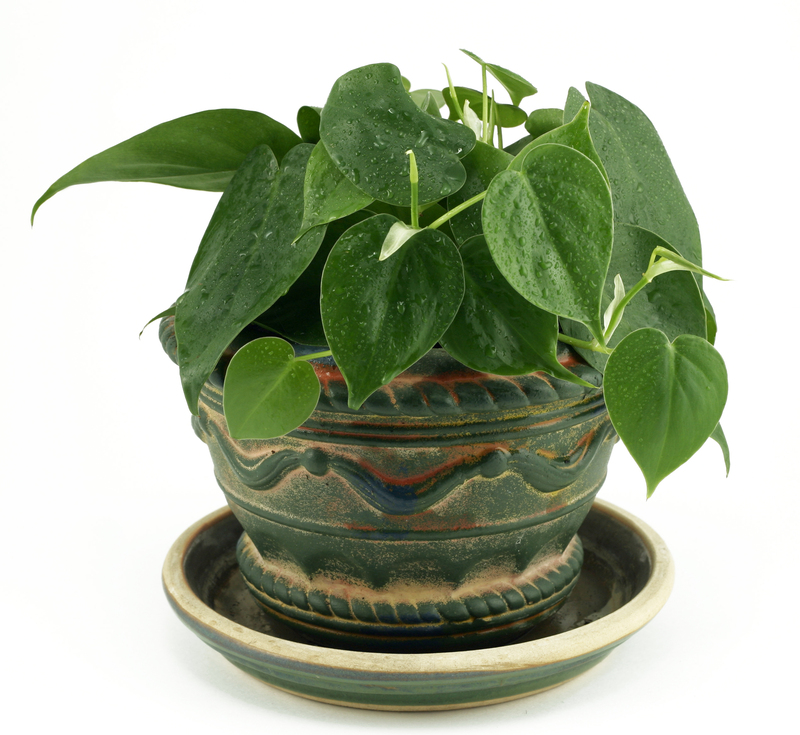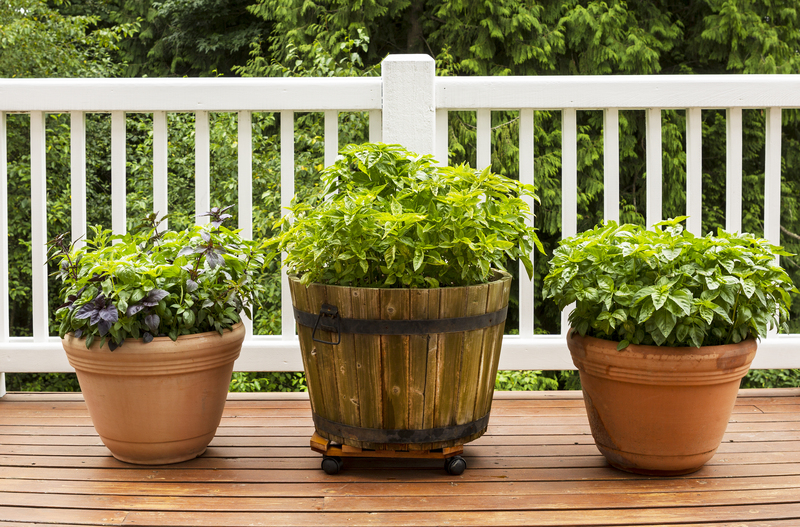Essential Guidelines for Thriving Orchids
Posted on 19/05/2025
Essential Guidelines for Thriving Orchids
Orchids are among the most captivating and diverse families of flowering plants. With their intricate blooms and delicate charm, it's no wonder that orchid care is a favored pursuit for amateur and experienced gardeners alike. However, cultivating healthy orchids that consistently bloom requires more than just admiration—it demands specific knowledge, patience, and the right techniques. Whether you are a beginner wondering how to nurture these beauties or an enthusiast aiming for advanced orchid growth, this comprehensive guide will walk you through essential guidelines to help your orchids truly thrive.

Understanding the Fascination with Orchids
Orchids (family Orchidaceae) boast over 25,000 species and offer a plethora of shapes, sizes, and colors. Their allure stems from their exotic appearance, longevity, and the profound satisfaction derived from witnessing them flower. However, myths abound regarding their care. Many believe orchids are fragile or exceedingly challenging to grow.
The truth? With the right approach and understanding, growing orchids can be straightforward and immensely rewarding!
Choosing the Right Orchid for Your Home
Before diving into the specifics of orchid care, selecting the right species is crucial. Some orchids adapt better to home environments than others. Here are some popular, beginner-friendly orchids:
- Phalaenopsis (Moth Orchid): Easiest to grow, with long-lasting flowers and forgiving nature.
- Dendrobium: Known for its tall canes; enjoys bright light and warm temperatures.
- Cattleya: Famous for their large, fragrant blooms and preference for strong light.
- Oncidium: Also known as "dancing ladies"; they thrive under bright conditions with moderate care.
Start with a robust and healthy orchid; avoid specimens with shriveled leaves, mushy roots, or visible pests. A thriving orchid is built on a strong and healthy foundation!
Understanding Orchid Needs: Key Building Blocks
Orchids are unique among houseplants. Unlike typical garden foliage, they are epiphytes—plants that grow upon other plants in their natural habitat. Understanding these needs is the first essential step in learning how to make your orchid thrive.
1. Light Requirements
Most orchid varieties require plenty of bright, indirect sunlight. Placing your plant near an east- or south-facing window is ideal. Avoid direct midday sun, which can scorch leaves.
- Phalaenopsis: Prefers low to moderate indirect light.
- Oncidium & Cattleya: Enjoy brighter, filtered light.
Tip: If your orchid’s leaves are dark green, it may need more light. Yellowish-green or reddish leaves indicate excessive exposure.
2. Temperature and Humidity
Orchids flourish in temperatures between 65-80°F (18-27°C) during the day and a slight drop at night. Maintaining humidity levels between 40-70% is crucial, as orchids thrive in environments that mimic their tropical origins.
- For increased humidity, use a humidity tray, group plants closely, or invest in a small room humidifier.
- Ensure adequate air circulation to prevent fungal infections and support healthy growth.
3. Potting Medium and Repotting
Orchids need a special potting medium that allows airflow and drainage. Common choices include:
- Bark mixes
- Sphagnum moss
- Coconut husk chips
- Leca pebbles
Repot every 1-2 years, or when the medium breaks down or roots outgrow the pot. Repotting stimulates growth and improves root health.
4. Watering Techniques
Overwatering is the leading cause of orchid decline. Orchids prefer their roots to dry out slightly between waterings. The correct frequency depends on the season, medium, and home conditions:
- Water thoroughly, letting excess drip out.
- Never allow the pot to sit in water.
- Water once a week for most indoors orchids, adjusting for humidity and heat.
Pro tip: Touch the potting medium. If it feels dry to the touch, it’s time to water!
5. Fertilizing for Optimal Growth
To encourage robust orchid growth and abundant blooms, fertilize with a balanced, water-soluble solution (20-20-20) at ¼ strength once a month.
- "Weakly, weekly" is a good mantra—fertilizer at low strength more often prevents build-up and supports steady growth.
- Flush the pot with plain water once a month to remove salt residues.
Comprehensive Care: Tips for Thriving Orchids All Year Round
Positioning and Environment
Position your orchid where temperatures remain constant and away from drafts, heat vents, or cold windows in winter. Day-night temperature differences naturally encourage blooming.
Recognizing Pests and Diseases
Orchids can be vulnerable to pests such as:
- Aphids
- Mealybugs
- Spider mites
- Scale insects
Treat infestations early by:
- Washing leaves with soapy water
- Pruning infected areas
- Using neem oil or insecticidal soap
Fungal diseases can result from overwatering or poor airflow. Always use sterile tools, and remove affected leaves to prevent spread.
Pruning and Promoting Re-blooming
After your orchid’s blooms fade, do not discard it! Most orchid plants can re-bloom with proper care:
- Trim the flower spike just above a visible node if it’s still green (for Phalaenopsis).
- If the spike turns brown, cut it back to the base.
- Resume normal care; new flower spikes often emerge during the next blooming cycle.
- Continue to fertilize and provide correct lighting.
Budding tip: A slight drop in nighttime temperatures often prompts new flower sprays.
The Role of Air Circulation
Good air movement is vital for thriving orchids. Stagnant air promotes fungal and bacterial infections. Use a gentle fan or crack a window in mild weather. This mimics their natural habitat and energizes plant processes.
Common Orchid Mistakes to Avoid
- Overwatering: The number one cause of root rot. Let the medium dry slightly before the next watering!
- Inadequate Light: Insufficient light means no flowers. Learn your orchid's preferences.
- Wrong Potting Mix: Standard potting soil will suffocate orchid roots. Use specialty orchid mixes only.
- Ignoring Repotting: Stale mix leads to poor nutrition and root suffocation.
- Neglecting Pests: Regular inspection ensures early intervention.
Frequently Asked Questions about Orchid Care
Why are my orchid's leaves turning yellow?
Yellowing leaves may be due to overwatering, insufficient light, or natural leaf aging. Check the roots and watering regime, and ensure adequate, but not excessive, light.
How do I know when to repot?
Signs that it's time to repot your orchid:
- Roots are circling the pot or growing over the edge
- The potting mix smells sour or looks broken down
- Roots appear mushy or rotten
When and how can I encourage spikes and blooms?
Orchids require optimal conditions to rebloom, including sufficient light, cooler nighttime temperatures, and a balanced fertilizing schedule. Patience and attention to seasonal changes are crucial.

Advanced Tips for Orchid Enthusiasts
- Experiment with species: Once you master Phalaenopsis, try Dendrobium, Vanda, or Cattleya for added variety.
- Use rainwater or distilled water: Tap water with heavy salts can harm orchids and prevent absorption of nutrients.
- Grow lights: Consider full-spectrum grow lights if you lack adequate natural sunlight. Adjust heights to avoid leaf burn.
- Seasonal adjustments: Many orchids bloom in response to seasonal changes. Mimic shorter days and cooler nights in autumn to trigger spikes.
- Document your plants: Keeping a care diary helps track watering, fertilizing, bloom cycles, and problems.
Conclusion: Nurturing Thriving Orchids Year After Year
Thriving orchids are the result of understanding their unique needs and providing consistent, gentle care. By mastering the balance of light, water, humidity, and feeding routines, you can transform your home into a lush sanctuary teeming with vibrant blooms. Remember, every orchid grower faces challenges—what matters most is persistence and learning from each experience.
Armed with these essential guidelines for flourishing orchids, you're well on your way to enjoying the elegance and beauty that only orchids can deliver. Share your successes, learn from setbacks, and delight in the ongoing journey of cultivating healthy, thriving orchids for years to come.
Love orchids? Bookmark this guide and let your home become a haven for these earthly jewels!



